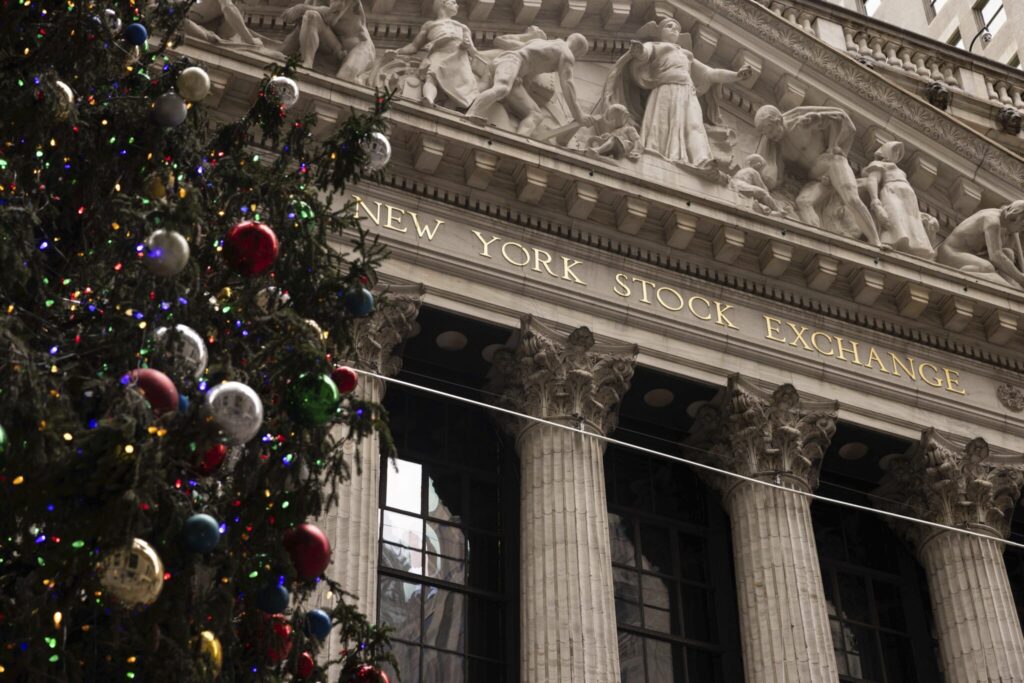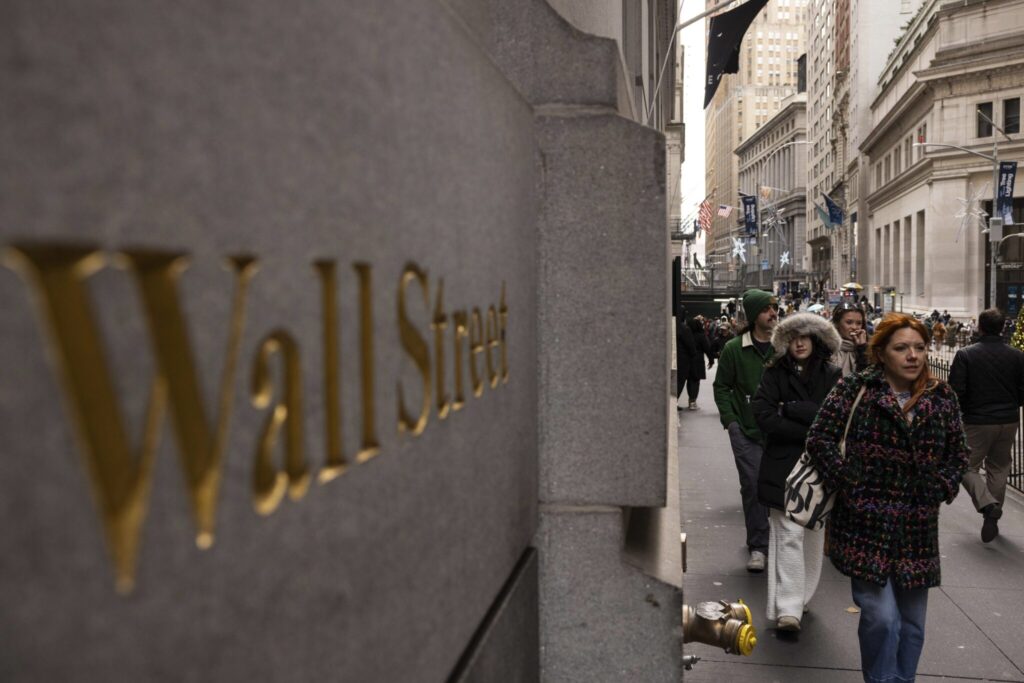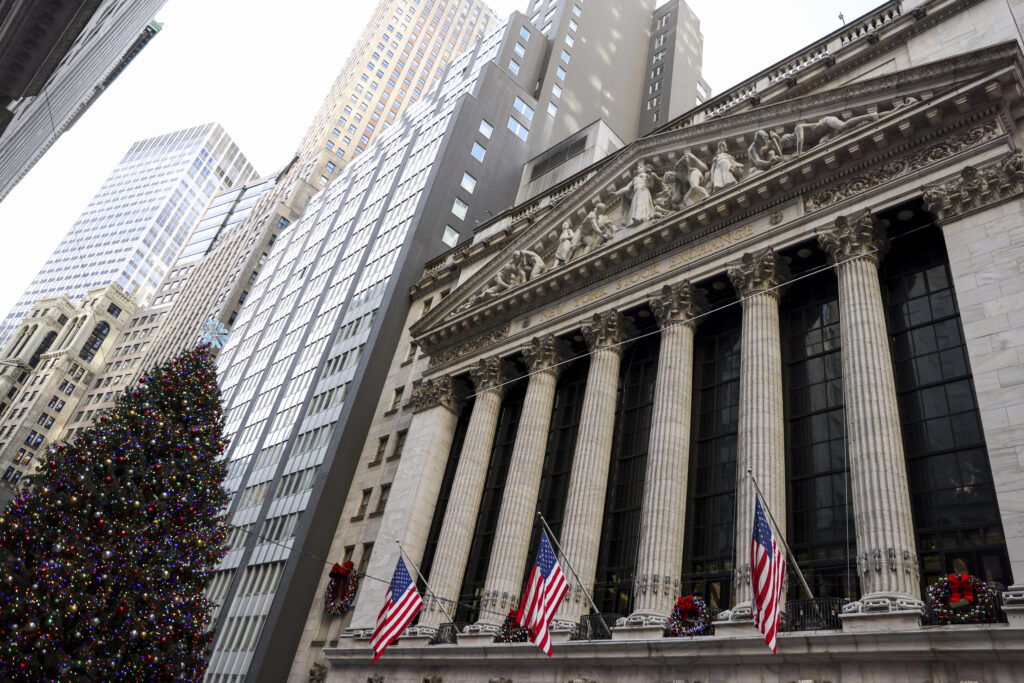Wall Street is ticking higher Thursday following its big rally the day before on excitement that several cuts to interest rates may indeed be coming next year. The S&P 500 was 0.3% higher in morning trading and within 1.5% of its all-time high set early last year. The Dow Jones Industrial Average was up 75 points, or 0.2%, and on track to set a record for a second straight day, as of 10:30 a.m. Eastern time. The Nasdaq composite was 0.3% higher.
Quick Read
- Increase in Stock Markets: The S&P 500, Dow Jones Industrial Average, and Nasdaq composite all saw increases in morning trading, with the Dow Jones on track for a second consecutive record-setting day.
- Individual Stock Movements: Moderna’s stock jumped 13% due to positive study results, while Adobe’s stock fell 6.3% due to a lower-than-expected revenue forecast for 2024.
- Expectations of Interest Rate Cuts: The market has been optimistic since October, bolstered by expectations that the Federal Reserve might cut interest rates in 2024.
- Federal Reserve’s Interest Rate Decision: The Fed held its main interest rate steady and indicated that the rate is near its peak, with projections showing a possible decrease next year.
- Global Central Bank Actions: Both the European Central Bank and the Bank of England kept their main interest rates unchanged, with no immediate plans for cuts.
- Drop in Treasury Yields: Treasury yields continued to fall, reflecting expectations of U.S. interest rate cuts.
- Sector-Specific Gains: Real estate and banking sectors saw significant gains, benefiting from the prospect of lower interest rates.
- Economic Resilience and Inflation Concerns: Despite high interest rates, the job market and economy have remained strong, but inflation, while easing, is still a concern.
- Reports Indicating Strong Economy: Retail spending increased unexpectedly in November, and jobless claims fell, signaling a robust economy.
- Market’s Reaction to Economic Data: Treasury yields briefly rose following the reports on retail spending and jobless claims, indicating the economy’s resilience.
- Expectations vs. Fed Projections: Market expectations for rate cuts are more aggressive than what Fed officials have projected.
- Goldman Sachs’ Forecast: Economists at Goldman Sachs predict the Fed will cut rates starting from March 2023, more frequently than previously estimated.
- International Market Responses: European markets rallied, while Asian markets were mixed. The Japanese Nikkei 225 fell due to a stronger yen against the dollar.
- Continued Momentum in Financial Markets: Despite some skepticism, there is a growing momentum for further easing of monetary policies globally.
The Associated Press has the story:
Wall Street rises on hopes for rate cuts, Dow ticks toward another record
Newslooks- NEW YORK (AP)
Wall Street is ticking higher Thursday following its big rally the day before on excitement that several cuts to interest rates may indeed be coming next year.
The S&P 500 was 0.3% higher in morning trading and within 1.5% of its all-time high set early last year. The Dow Jones Industrial Average was up 75 points, or 0.2%, and on track to set a record for a second straight day, as of 10:30 a.m. Eastern time. The Nasdaq composite was 0.3% higher.
Moderna jumped 13% after it reported encouraging data from a study of its treatment for high-risk melanoma that’s used with Merck’s Keytruda. That helped to offset a 6.3% slump for Adobe, which gave a forecast for 2024 revenue that fell short of analysts’ expectations.
Stocks broadly have been shooting higher since October on hopes that inflation has cooled enough for the Federal Reserve to not only stop its market-rattling hikes to interest rates but to even begin considering cutting them. Those hopes strengthened Wednesday after the Fed held its main interest rate steady and said the federal funds rate is likely already at or near its peak.
More importantly, the Fed also released projections showing its median official expects the federal funds rate to fall next year by more than earlier expected. Wall Street loves lower interest rates because they can goose prices for investments and relax the pressure on the economy and financial system.

Other central banks are also meeting this week, and hopes are rising that the pivot toward easier conditions for financial markets and the economy may be global. Both the European Central Bank and Bank of England on Thursday decided to keep their main interest rates unchanged, though each also gave signals that cuts are not imminent.
Treasury yields sank further in the bond market as traders bet on a series of cuts to U.S. interest rates coming in 2024.
The yield on the 10-year Treasury fell to 3.95% from 4.03% late Wednesday. It was above 5% in October, at its highest level since 2007, and the sharp drop since then has given the stock market a big boost.
Owners of office parks, hotels and other real estate, which benefit from lower interest rates, were some of Thursday’s bigger winners. Real-estate stocks rose 2.4% for the biggest gain among the 11 sectors that make up the S&P 500 index, including a 6.8% jump for Boston Properties.
Banks were also strong. High interest rates have hurt the industry’s players a rung or two in size below the behemoth banks, and they helped cause three high-profile collapses earlier this year. Lower interest rates could ease the pressure, and Regions Financial and Zions Bancorp. both jumped at least 7%.
But the recent rally for stocks and drop for Treasury yields seem to be banking on the Federal Reserve pulling off what was considered a long shot not long ago.
The hope is that the Fed can manage its interest-rate policy exactly right: first, by slowing the economy and hurting investment prices enough through high interest rates to snuff out inflation, and then by making conditions easier at the right time to prevent the economy from slowing too much and sliding into a painful recession.
That’s still not assured, as both Fed officials and cautious investors are warning.

One threat is that the economy stays too hot, which would keep upward pressure on inflation and could force the Fed to at least keep rates high for longer or hike them again.
A couple reports on Thursday indicated the economy may be stronger still than economists expect. One showed U.S. shoppers spent more at retailers in November than October, when economists were forecasting a slight decline. Another report said fewer U.S. workers applied for jobless benefits last week, a signal of a remarkably resilient job market.
Treasury yields briefly undid some of their declines following the reports. But traders are still betting on a nearly three-in-four chance that the Federal Reserve will cut its main interest rate by at least 1.50 percentage points next year, according to data from CME Group. That’s double what the median Fed official is expecting.
“Our view is that the market is pricing too fast a pace of cuts,” said Solita Marcelli, chief investment officer America at UBS Global Wealth Management.
Critics have said the amount of rate cuts that traders are expecting is unlikely unless the U.S. economy falls in to a recession.
Momentum nevertheless appears to be building further.
With inflation falling faster than expected, economists at Goldman Sachs say they now forecast the Fed to cut its main interest rate by 0.25 percentage points at each of its meetings in March, May and June next year, followed by cuts every three months that take the federal funds rate down to a range of 3.25% to 3.50%. That forecasted bottom is a bit lower than they had earlier estimated.
In stock markets abroad, indexes rallied across Europe and were mixed in Asia. Japan’s Nikkei 225 slumped 0.7% as hopes for U.S. rate cuts drove the value of the dollar down against the yen. That hurts Japanese exporters.







